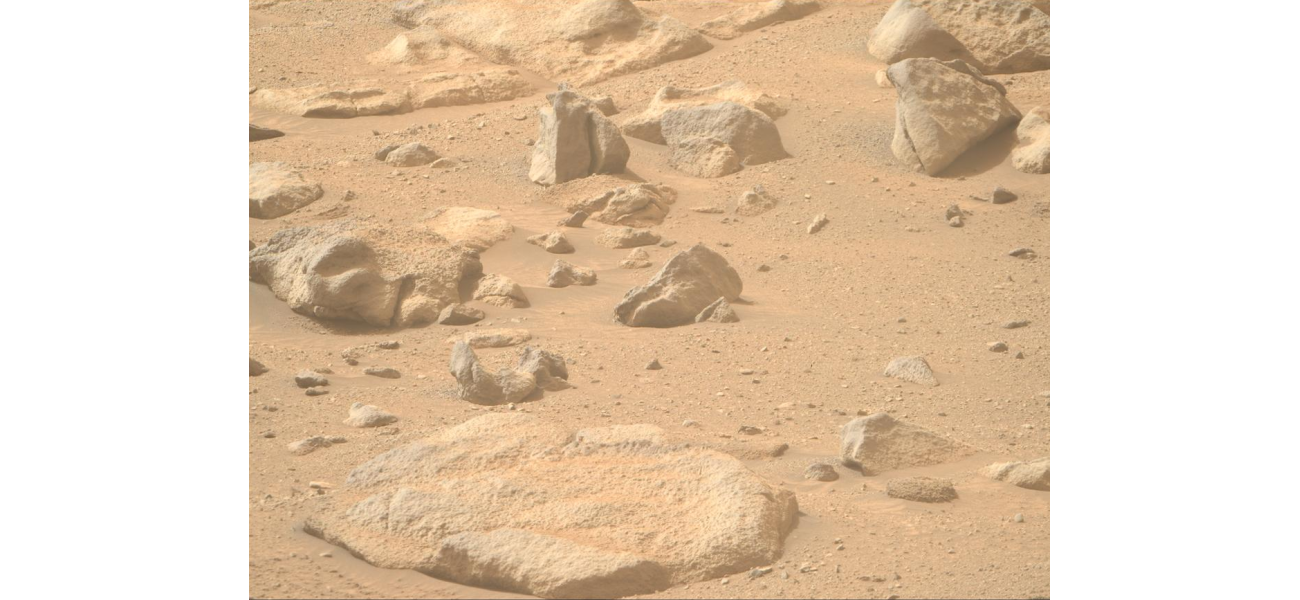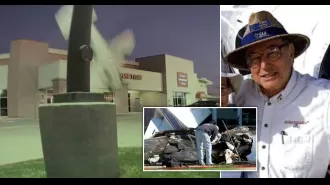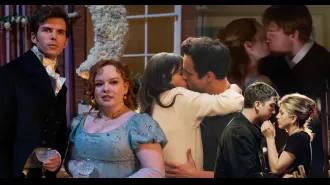Spooky 'human-like face' found on Mars - can you spot it?
Can you find it?
October 21st 2024.

Can you see it? Have you noticed the human-like face buried in the dusty surface of Mars? It may seem eerie, but an image sent back from the Perseverance rover has captured this peculiar sight. In the left corner of the picture, there is an oddly shaped object that has caught the attention of many. Some may see it as a simple rock, but to others, it resembles three-quarters of a human face, with deep eyes, a wide nose, and a sad, sloping mouth. The rock-face appears to be in distress, as it withers away under the harsh rays of the Sun.
The photo was taken on September 27th, and despite its striking resemblance to a decapitated head, it is nothing more than a chunk of sedimentary sandstone, similar to the other rocks surrounding it. This particular rock-head is located in the Jezero Crater, a 28-mile wide region on Mars that may have once been filled with water. It's a fascinating sight, but also a reminder of the harsh and unpredictable conditions of the Red Planet.
So why do we see a face in this rock? This is a common psychological phenomenon known as pareidolia. It's a natural tendency for our brains to perceive familiar images in random or ambiguous visual patterns. We've all experienced it, whether it's seeing a smiley face in our coffee or spotting a lion in the clouds. But pareidolia seems to be particularly common on Mars. People have spotted rocks that resemble a bear's face, fungus, a carved warrior, a small Bigfoot, a spoon, and even bugs. Our eyes see an arrangement of shadows and shapes, and our brains fill in the gaps to make sense of it all.
This is not the first time a human-like face has been spotted on Mars. In 1976, an image taken by the Nasa Viking 1 mission showed a picture of Cydonia that bore a striking resemblance to a human face. It was dubbed "the face on Mars" and sparked much speculation and fascination. However, later missions with better technology revealed that it was just a mesa - a large rock formation with a shape and shadows that happened to resemble a face.
Pareidolia is a common occurrence in space, and it often influences how we name things. For example, the Horsehead nebula, which has a striking resemblance to a knight in chess. It's a reminder that our perception is shaped by our experiences and expectations, even in the vastness of space. So next time you look at the stars, keep an eye out for any familiar shapes or faces - you never know what you might see.
The photo was taken on September 27th, and despite its striking resemblance to a decapitated head, it is nothing more than a chunk of sedimentary sandstone, similar to the other rocks surrounding it. This particular rock-head is located in the Jezero Crater, a 28-mile wide region on Mars that may have once been filled with water. It's a fascinating sight, but also a reminder of the harsh and unpredictable conditions of the Red Planet.
So why do we see a face in this rock? This is a common psychological phenomenon known as pareidolia. It's a natural tendency for our brains to perceive familiar images in random or ambiguous visual patterns. We've all experienced it, whether it's seeing a smiley face in our coffee or spotting a lion in the clouds. But pareidolia seems to be particularly common on Mars. People have spotted rocks that resemble a bear's face, fungus, a carved warrior, a small Bigfoot, a spoon, and even bugs. Our eyes see an arrangement of shadows and shapes, and our brains fill in the gaps to make sense of it all.
This is not the first time a human-like face has been spotted on Mars. In 1976, an image taken by the Nasa Viking 1 mission showed a picture of Cydonia that bore a striking resemblance to a human face. It was dubbed "the face on Mars" and sparked much speculation and fascination. However, later missions with better technology revealed that it was just a mesa - a large rock formation with a shape and shadows that happened to resemble a face.
Pareidolia is a common occurrence in space, and it often influences how we name things. For example, the Horsehead nebula, which has a striking resemblance to a knight in chess. It's a reminder that our perception is shaped by our experiences and expectations, even in the vastness of space. So next time you look at the stars, keep an eye out for any familiar shapes or faces - you never know what you might see.
[This article has been trending online recently and has been generated with AI. Your feed is customized.]
[Generative AI is experimental.]
0
0
Submit Comment





